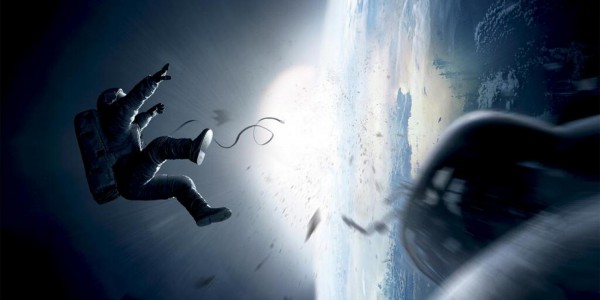2. Gravity Offers Us Prometheus And Icarus

During the first hour of Gravity, I was reminded of another bit of movie history in the last scene of Godfrey Reggios Koyaanisqatsi (1982) in which a rocket is launched into space, only to explode and fall back to the earth. Like Reggios metaphor of the failed rocket, Cuarón is asking us to consider the irony of the astronauts mission in space. None of the Promethean technological advances of the space program can prevent the chaos that threatens Stone and the other astronauts. As the disaster begins and later multiplies itself, we recall Icarus whose hubris resulted in a fate similar to that of the astronauts. Yet, there is a more important message that goes beyond the world of spacecraft and astronauts. All of us, whatever our place in life, are caught up in the play of Prometheus and Icarus. We strive to build great things yet, in the end, all of these things will be destroyed. It may be high time to look at the interplay of these mythical beings as they relate to our own earthly lives. Reggios Koyaanisqatsi and Cuaróns Gravity (and, even more profoundly, his Children of Men) may offer us the valuable lesson that all great societiesno matter their cultures, technological innovations, or other advancementswill falland we, with them.
Scott A. Lukas
Contributor
Scott A. Lukas has taught anthropology and sociology Lake Tahoe Community College for sixteen years and in 2013 was Visiting Professor of American Studies at the Johannes Gutenberg University of Mainz, Germany. He has been recognized with the McGraw-Hill Award for Excellence in Undergraduate Teaching of Anthropology by the American Anthropological Association (2005), the California Hayward Award for Excellence in Education (2003), and a Sierra Arts Foundation Artist Grant Program Award in Literary–Professional (2009). In 2006, he was a nominee to the California Community College Board of Governors. He is the author/editor of The Immersive Worlds Handbook (2012), Theme Park (2008), The Themed Space: Locating Culture, Nature, and Self (2007), Fear, Cultural Anxiety, and Transformation: Horror, Science Fiction, and Fantasy Films Remade, (co-edited with John Marmysz, 2009), Recent Developments in Criminological Theory (co-edited with Stuart Henry, 2009), and Strategies in Teaching Anthropology (2010). His book Theme Park was recently translated into Arabic. He appeared in the documentary The Nature of Existence and has provided interviews for To the Best of Our Knowledge, The Huffington Post UK, The Daily Beast, The Washington Post, and Caravan (India).
See more from
Scott
 During the first hour of Gravity, I was reminded of another bit of movie history in the last scene of Godfrey Reggios Koyaanisqatsi (1982) in which a rocket is launched into space, only to explode and fall back to the earth. Like Reggios metaphor of the failed rocket, Cuarón is asking us to consider the irony of the astronauts mission in space. None of the Promethean technological advances of the space program can prevent the chaos that threatens Stone and the other astronauts. As the disaster begins and later multiplies itself, we recall Icarus whose hubris resulted in a fate similar to that of the astronauts. Yet, there is a more important message that goes beyond the world of spacecraft and astronauts. All of us, whatever our place in life, are caught up in the play of Prometheus and Icarus. We strive to build great things yet, in the end, all of these things will be destroyed. It may be high time to look at the interplay of these mythical beings as they relate to our own earthly lives. Reggios Koyaanisqatsi and Cuaróns Gravity (and, even more profoundly, his Children of Men) may offer us the valuable lesson that all great societiesno matter their cultures, technological innovations, or other advancementswill falland we, with them.
During the first hour of Gravity, I was reminded of another bit of movie history in the last scene of Godfrey Reggios Koyaanisqatsi (1982) in which a rocket is launched into space, only to explode and fall back to the earth. Like Reggios metaphor of the failed rocket, Cuarón is asking us to consider the irony of the astronauts mission in space. None of the Promethean technological advances of the space program can prevent the chaos that threatens Stone and the other astronauts. As the disaster begins and later multiplies itself, we recall Icarus whose hubris resulted in a fate similar to that of the astronauts. Yet, there is a more important message that goes beyond the world of spacecraft and astronauts. All of us, whatever our place in life, are caught up in the play of Prometheus and Icarus. We strive to build great things yet, in the end, all of these things will be destroyed. It may be high time to look at the interplay of these mythical beings as they relate to our own earthly lives. Reggios Koyaanisqatsi and Cuaróns Gravity (and, even more profoundly, his Children of Men) may offer us the valuable lesson that all great societiesno matter their cultures, technological innovations, or other advancementswill falland we, with them.